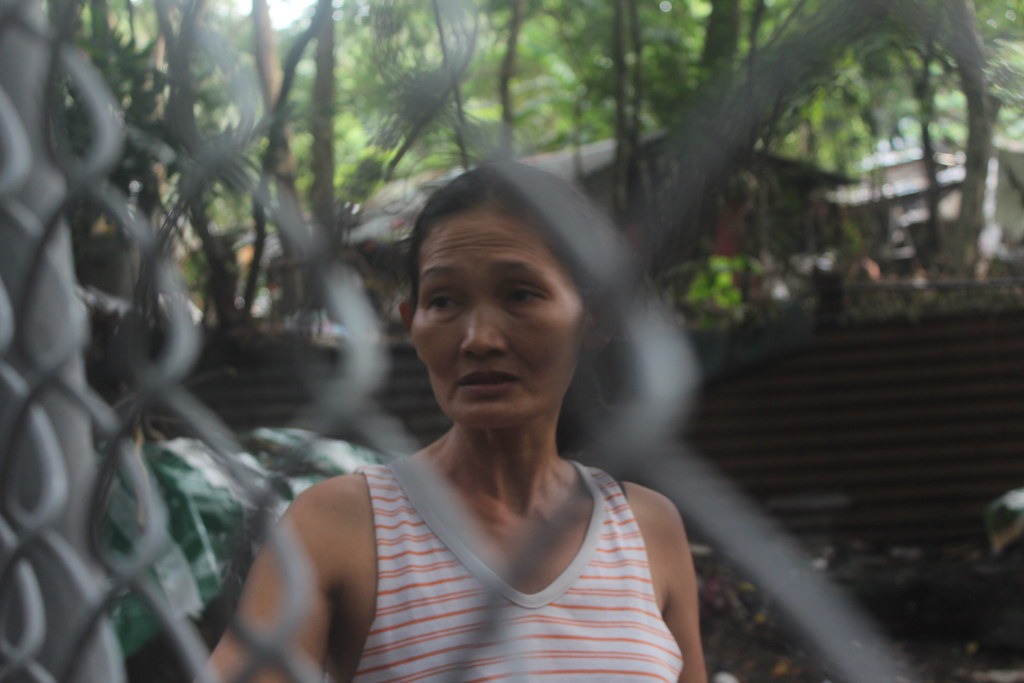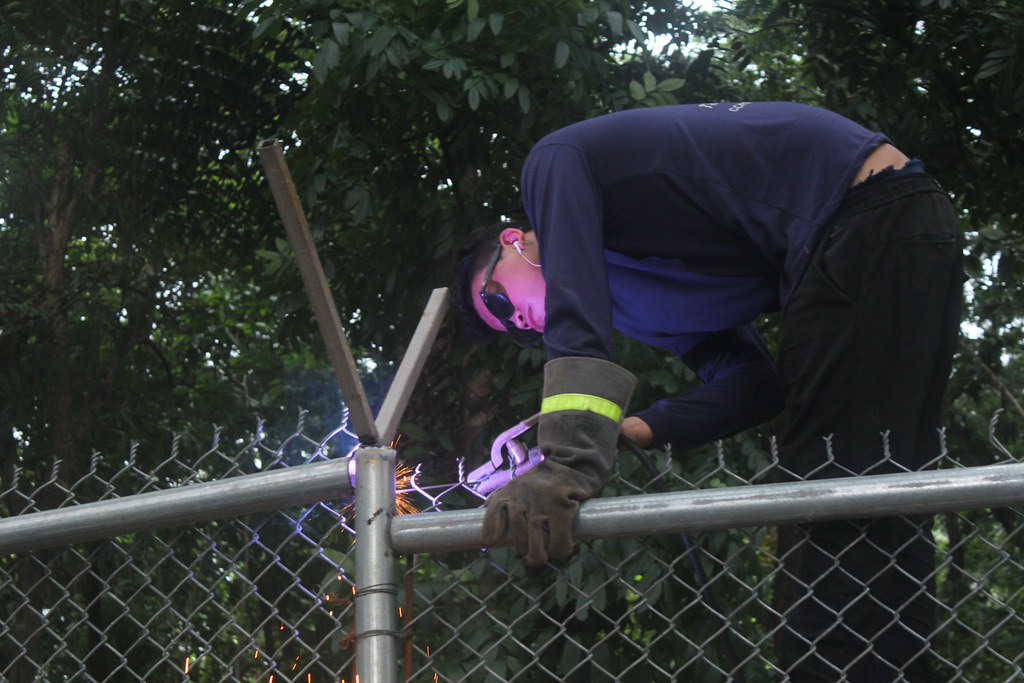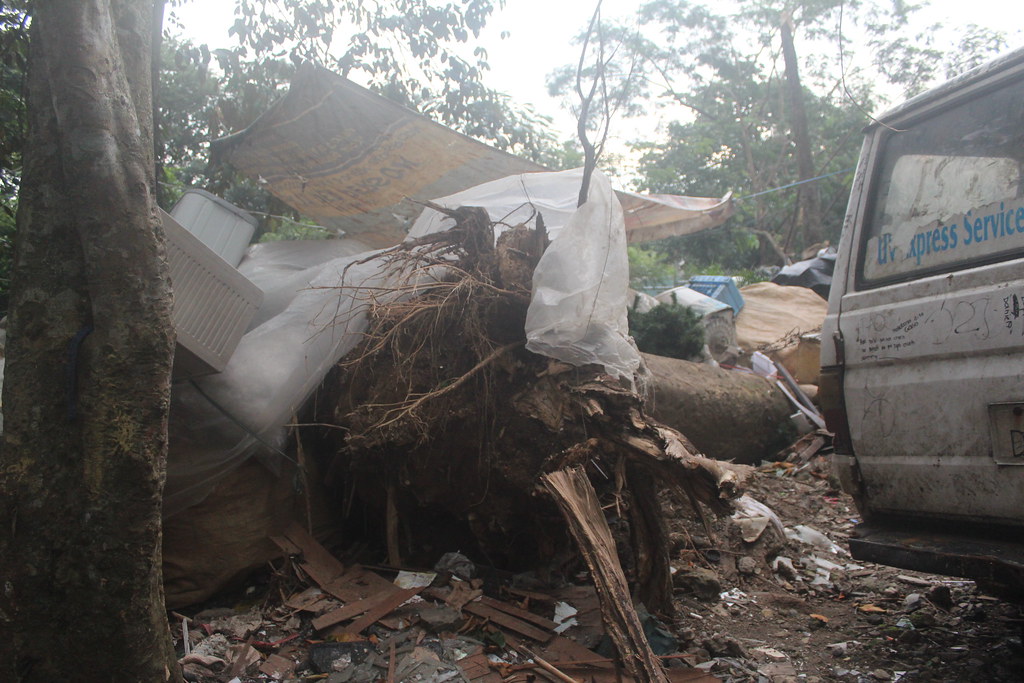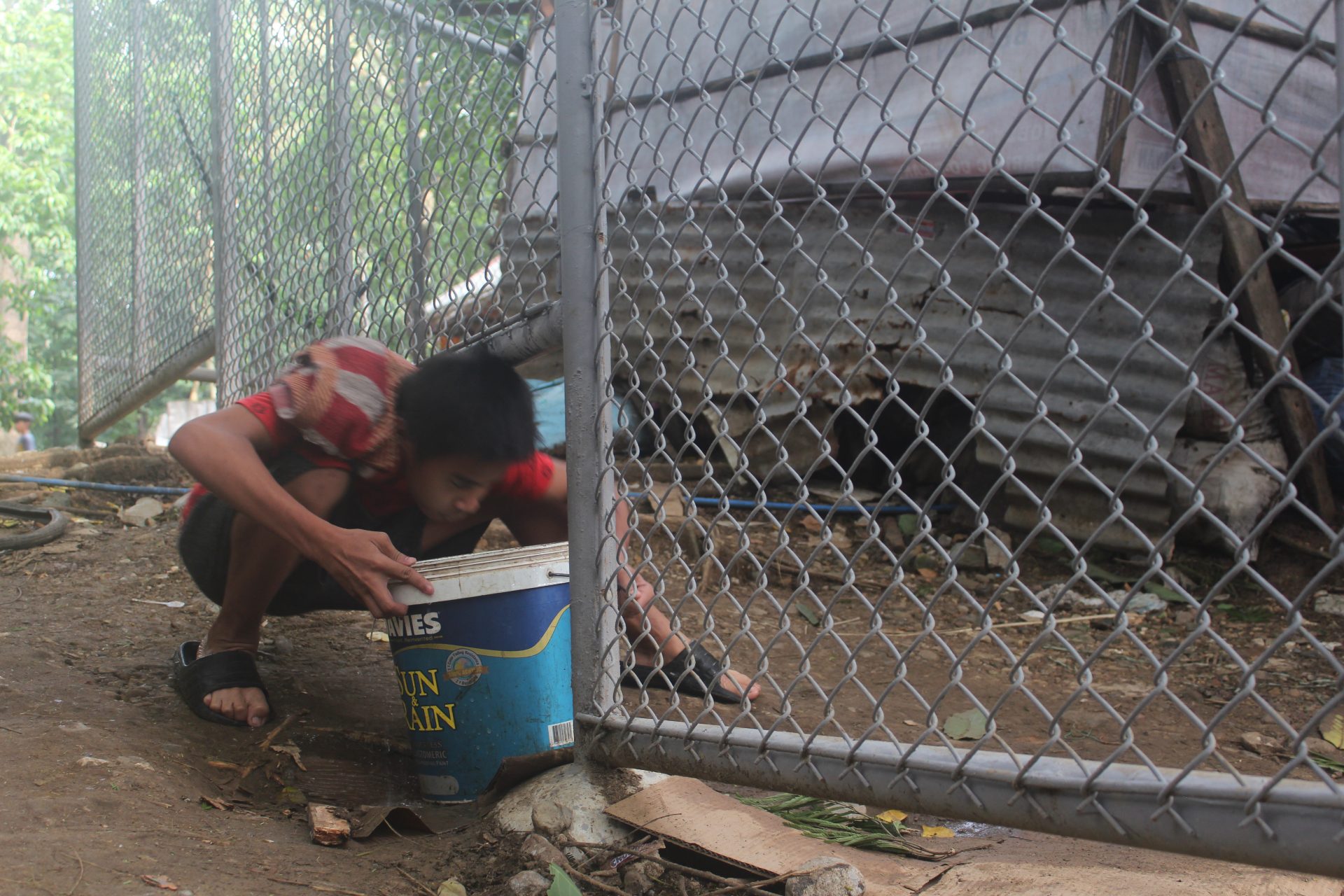Residents of the University of the Philippines (UP)’ Arboretum, Quezon City’s remaining rainforest, are threatened with displacement as officials sent a notice December 2018 of the planned construction of Diliman’s Philippine General Hospital (PGH).
UP officials erected cyclone wire barriers January 2019 that cut through the middle of the 22-hectare forest. Trees were uprooted in the area UP certified as a Priority Protection Zone (PPZ) in 2003. The Arboretum, which makes up 4.46 percent of UP’s entire land, must not be subject to “any invasive development or other activities that will undermine its environmental integrity.”
Aside from being designated a PPZ, the Arboretum has also been named a Protected Forest Area in the 2012 Land Use Plan of UP Diliman. This mandates the forest ”…shall remain untouched and protected in accordance with law.”
It can only be used for academic purposes with little to no negative intervention. Home to a number of tree species, most trees in Arboretum are short-lived and exotic.
Today, long meters of cyclone wire stand out like a sore thumb amid the lush greenery. This is the daily bane of Pook Arboretum residents trapped inside, who are forced to crawl under the 2-feet gap between the fence and the soil to get to and from their houses.
In the name of an advanced medical facility in Diliman, the forest is slowly being stripped off of trees that have been there since 1948, and its people are going, too.
Residents at risk
One of the oldest residents of Pook Arboretum is Leocadio Alasaas, 79, who has been living there since 1967. A former gardener, his knees now shake as he gets up and inspects the cage a few steps away from his house. Along with the other houses in the area, his house has been enclosed inside a cyclone wire barrier.
Rolando Bantegui, one of the nearby residents, recalled having to negotiate with authorities in leaving one part of the barrier open so senior citizens like Alasaas can still leave.

“Dapat iconsider yung karapatang pantao, secure yung kaligtasan ng mamamayan, hindi yung basta babakuran lang. Kasi ano ba to, kinulong mo na yung tao eh,” said Bantegui.
But some residents have it harder. On the other side of the forest, the barrier has been erected completely with no openings. It left residents like Remedios Reyes, who has been living in the area for 11 years, with no choice but to dig the soil under.
Reyes, a mother of six, said her son, a Grade 10 student at a nearby high school, crawls under the barrier every day to get to school. His uniform would get soiled when it rains and the land becomes muddy. They have no choice — walking around the other way would take too long.

“Mahirap talaga. Alas singko, pagka-aalis, gagapang talaga. Kaysa umikot nang malayo,” said Reyes. Every day, her son has to crouch near the ground to pass under the cyclone barrier and leave Arboretum.
“Pag maulan, mapuputikan talaga. Minsan baha yan dito, hanggang sa tuhod, yung tubig hindi nakakalabas dahil sementado,” she added.
Residents have signed a petition three times to clamor for an opening that will allow them to come and go, said Reyes. But this seems to have been ignored.
“Pasalamat din kami dahil iniwas nila yung mga bakod sa mga bahay, pero ngayon ang gusto nila hanggang dito [cutting through the residents’ houses]. Paano naman yung mga matatanda na dati pa nagpatayo ng bahay?” said Reyes.
The impact of the enclosement to the health of the residents are far-reaching. Garbage pile up outside residents’ houses as the barrier doesn’t have a wide opening to fit garbage bags. The result is a massive stack of rotting trash that leaves many residents, including children, at risk of getting sick.
Residents also agonize over bringing the sick or bedridden to the nearest hospital if an emergency arises. Some of the pregnant women in the area fear they may be forced to give birth in their own homes as they are unable to walk the long distance around the barrier to exit Pook Arboretum.
Office of Community Relations Director Dr. Karen Jago-on last met with the residents March 6 notifying the residents to move out, according to Bantegui. She asked them a month after to submit a position paper and to conduct a dialogue with the office, to which the residents declined for fears of being backed into a corner.
One said they cannot conduct a dialogue with the university unless the administration stops insisting on moving them out.
Amid threats of displacement from the administration, blue guards and armed military men regularly roam the forest. Some residents have expressed their fear of angering or catching the attention of these armed officials who accompany those constructing the barriers.
“Ang mga blue guard ay madalas pumunta dito, sumisilip, pag nakakarinig ng nagpupukpok. Minsan pag nakakaramdam na may nagpupukpok, sumisilip yan,” added Reyes.
A number of armed men in uniform are seen standing beside the barriers being constructed September.

Historical relevance
Alasaas has been residing in Pook Arboretum when the late UP botanist Dr. Jose Vera Santos assigned him to take care of the forest. Santos said he must take care of the trees, to which Alasaas had been doing even after the botanist passed away.
“Sila ang nagsabi na dito ako para maalagaan yung mga puno. Pero walang dokumento ito kaya hindi ito opisyal. Ang mga nakatira talaga dito noong una ay mga empleyado ng UP,” said Alasaas.
During his time, only a handful of gardeners and UP employees lived in the forest. However, over time, people from various nearby cities flocked to the forest and set up their own houses inside, resulting in a mass influx of urban dwellers that has ballooned to at most 2,500 in 2015.
“Ang sabi ko kako kung sino pa pinakamatanda na nabubuhay dito, ako pa unang kinulong,” lamented Alasaas.
Alasaas recalled one could not walk ten steps without bumping into trees in the Arboretum. That was how dense the forest was before.
Today, he lamented the poor condition of Arboretum due to the influx of urban settlers and plans of using the land for infrastructure, among them the construction of PGH Diliman, which some residents have said is unnecessary due to the poor state of the current PGH in UP Manila.
Timeline by Geraldine Pearl Santos
Illegal tree-cutting
When strong typhoon winds blew and uprooted one of the large trees in the forest in June, it fell on a house with a family of two living inside.

The child was not in the house at the time the tree fell. The tragedy took the life of the mother, which left the child to the care of family relatives.
A few steps away from the area is another large tree whose roots have been partially cut to make way for the construction of the barrier. It is now slanted diagonally, at risk of falling with another blast of strong winds.

Families living in the vicinity are unable to relocate elsewhere despite the threat of being crushed under the tree. The safety hazards that come with living in the Arboretum goes unaddressed among barangay officials that neglect the complaints of residents.

Bantegui said they are not against the UP Master Development Plan (UP MDP) if the development will benefit the people.
But to destroy the forest and mistreat the people who helped protect it, he said, is inhumane.
“Kapag hindi kami lumaban, maghihintay kami para sa wala. Pinaglalaban namin ang aming komunidad, at ang laban na ito ay nasa batas,” he added.
Relocation issues
Families to be displaced by the construction of PGH Diliman must be given adequate relocation, whether temporary or permanent, by the Department of the Interior and Local Government (DILG) and the Housing and Urban Development Coordinating Council under the Department of Human Settlements and Urban Development, according to the Urban Development and Housing Act of 1992.
Bantegui said they were promised to be relocated to Pook Malinis where, after a year, they will be asked to leave due to another planned construction in the area.
“Imbes na relocation area ibigay nila, doon pumapasok yung staging area na pansamantalang tirahan ng tao sa Pook Malinis,” said Bantegui. The temporary relocation costs P1,000 per month. After a year, they must leave the area as UP will use the land for the construction of an aqueduct, or water supply, according to Bantegui.
In January, residents of Pook Malinis, Barangay UP Campus, fought off demolition due to planned construction of a parking space for the UP Office of Community Relations (OCR) in the area, according to Scientia.
Bantegui, alongside housing leaders of other UP communities like Pook Malinis, staged a rally in front of Quezon Hall in October to call for accountability in the displacement the UP MDP has caused.
Bantegui plans to bring the Arboretum residents’ fight to higher offices.
“Sa korte ko dadalhin ang usapan. Ang laki ng babanggain ko pero naniniwala pa rin ako sa batas at tamang hustisya, at minsan pa na mapapatunayan na walang malaki ang nakakapuwing at nobody above the law,” said Bantegui.
“Ang sabi nila kami daw mga militante, lumalaban. Ang tanong, sino ang nagturo saamin? UP din. UP ang nagsasabi na ipaglaban ang iyong mga karapatan, kaya ngayon yung turo nila, ibabalik lang natin sakanila,” said JP*.
Tinig ng Plaridel contacted OCR Director Karen Jago-on for comment, but she has not responded as of press time.
Note: The name of the interviewee* has been changed at his request.
With reports from Jefferson Losito








